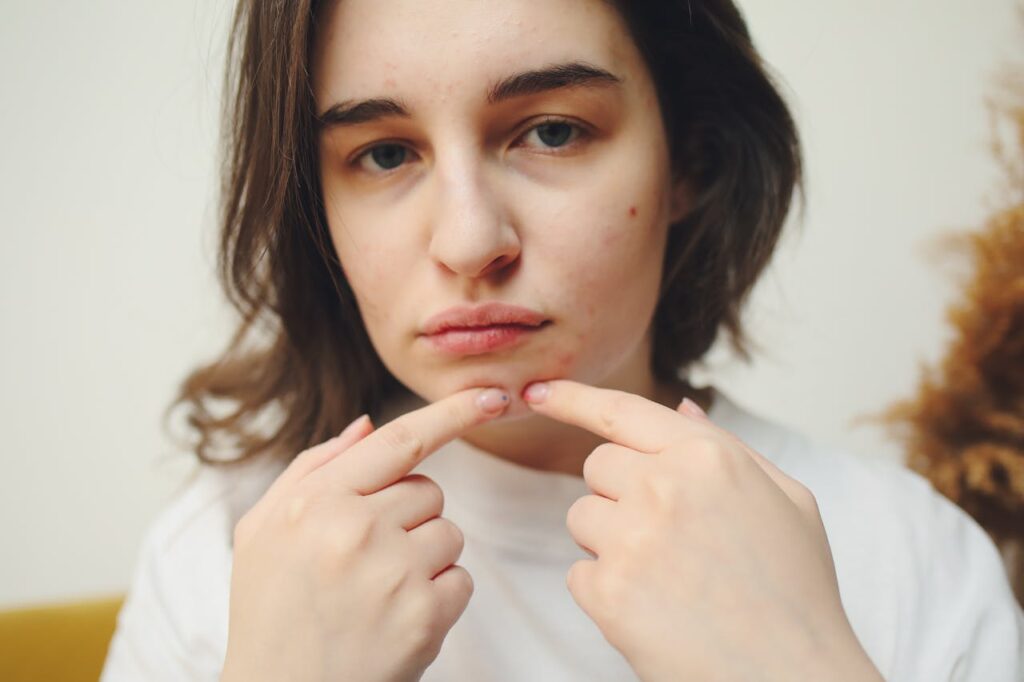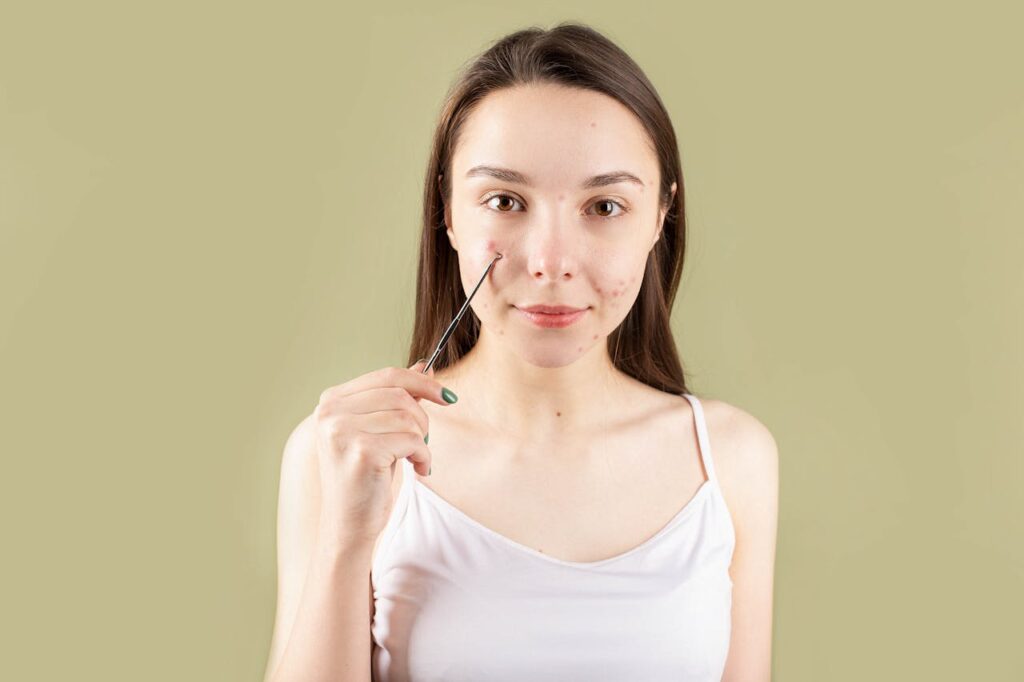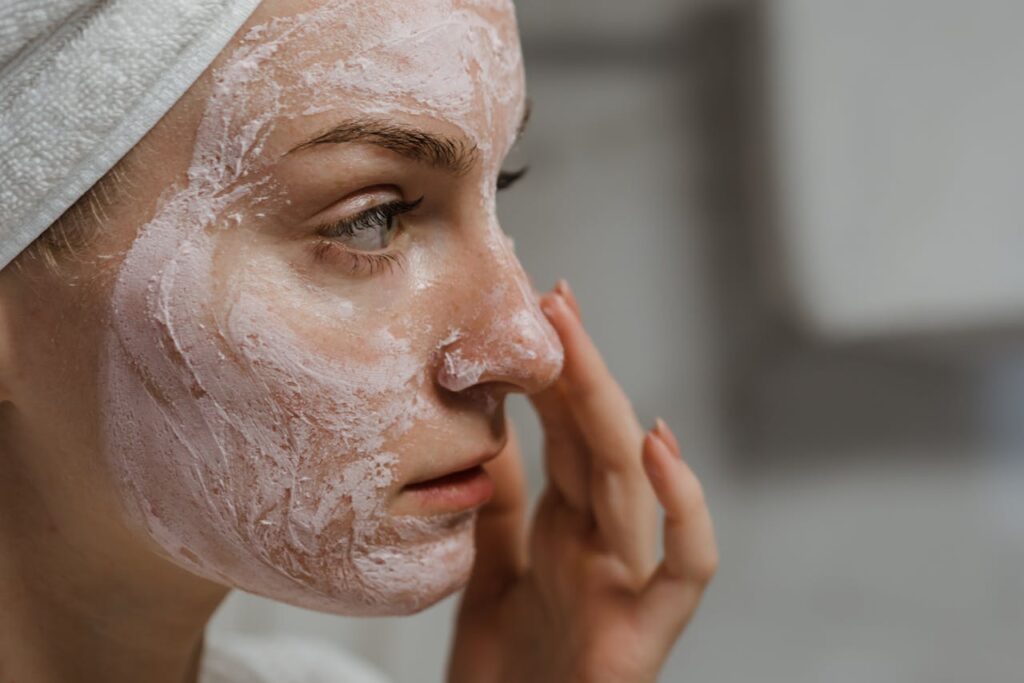If You Don’t Have Enough of This Mineral, You Will More Likely Get Age Spots
Last updated on
We often treat age spots as cosmetic clutter, visual reminders of sun exposure or another candle on the birthday cake. But under the surface, these patches may reflect something deeper: the internal state of our cells.
Age spots are more than just pigment. They’re signs of oxidative stress, the same cellular wear-and-tear that drives aging throughout the body. And while UV exposure is a major factor, new insights point to something more subtle: your nutrient intake.
Take selenium, for example. Though needed only in tiny amounts, this trace mineral is essential for protecting skin cells from oxidative damage. Research suggests that people with lower selenium levels are more vulnerable to UV-related changes and pigmentation. In fact, one study found that every 20 microgram increase in dietary selenium intake was associated with longer telomeres. It’s the protective caps on DNA strands that influence how fast we age.
Skincare routines and sunscreen often get the spotlight. But when it comes to fighting age spots, your body may be asking for something simpler: nutritional support from within.
More Than Skin Deep: How Age Spots Reflect Your Inner Environment
They’re called age spots, liver spots, or solar lentigines but no matter the name, these darkened patches tend to show up in the same places: the hands, face, shoulders, and arms. Most common after age 50, they’re often dismissed as harmless reminders of years spent under the sun. But beneath their surface lies a story that’s as much about your biology as it is about your environment.
At the heart of every age spot is melanin, the pigment that gives skin its color and acts as a natural defense against ultraviolet (UV) radiation. When your skin is repeatedly exposed to the sun, it ramps up melanin production to shield itself. But over time, this process becomes uneven, leading to localized pigment accumulation. That’s when age spots begin to appear.

Genetics can influence who develops them and how prominent they become. But there’s another key factor that operates silently in the background: oxidative stress. Triggered by UV rays, pollution, and even normal metabolic activity, oxidative stress creates free radicals that damage skin cells and disrupt pigment regulation. The result? Accelerated aging and visible signs of cellular wear.
Seen in this light, age spots are not just cosmetic. They’re a visible marker of cumulative stress, revealing how well or poorly your skin has been able to defend itself over time. A weakened antioxidant defense, including lower levels of protective nutrients like selenium, may leave skin more vulnerable to this damage.
So while these spots may not pose medical danger, they’re often the skin’s way of saying: something inside needs support.
The Unsung Mineral Behind Resilient Skin
In the world of skincare, buzzwords like collagen, vitamin C, and retinol often dominate the conversation. But beneath the glow of trendier ingredients lies a lesser-known element that quietly shapes your skin’s ability to heal, defend, and age gracefully: selenium.
Unlike vitamins your body can store or produce under certain conditions, selenium is an essential trace mineral, meaning you must get it from your diet, even though you only need a small amount. Its real power lies in what it helps build: selenoproteins, a unique class of proteins that regulate hormones, bolster immunity, and most critically for skin act as antioxidants.
These antioxidants aren’t cosmetic. They’re cellular defense agents. Selenium-dependent enzymes like glutathione peroxidase and thioredoxin reductase are responsible for neutralizing free radicals. Those are unstable molecules that damage DNA, proteins, and the membranes of skin cells. And since UV light is one of the most potent generators of free radicals, selenium plays a central role in buffering against photoaging and pigmentation changes.
Science supports its skin-saving potential. A 2020 study observed that higher dietary selenium intake was linked with longer telomeres which is the DNA-protective caps that naturally shorten with age. Longer telomeres suggest slower cellular aging. Other research shows selenium also helps the body manage misfolded proteins, which accumulate with age and have been tied to chronic diseases and visible skin deterioration.
Selenium won’t erase existing age spots. But what it does do is quietly intercept the processes that create them, helping your skin recover from oxidative stress before damage takes hold. Think of it not as a flashy fix, but as a foundational support working behind the scenes to keep your skin stronger, longer.
When Skin Sends a Warning: The Overlooked Signs of Selenium Deficiency
Sometimes, the skin speaks before the body does.
When age spots begin to multiply or sun damage lingers longer than it should, it may not just be a matter of aging or inadequate sunscreen. Beneath the surface, your body could be running low on a crucial, invisible ally: selenium.
This trace mineral is a key player in your body’s defense system. Without enough of it, the enzymes that guard against oxidative stress, especially the kind triggered by UV exposure, can’t perform effectively. The result? Skin cells become more vulnerable to damage. Melanin production may spiral into overdrive, creating the uneven patches we call age spots.
But selenium deficiency doesn’t stop at the skin. It can delay wound healing, compromise immune function, and, in more severe cases, contribute to thyroid imbalances, heart disease, and cognitive decline. That said, the skin often reveals the earliest signs: increased sun sensitivity, slow recovery from sunburn, and discoloration that lingers longer than it should.
Certain populations face greater risk. People living in selenium-poor regions like parts of China, Russia, and some areas in Europe are more likely to fall short. In the United States, deficiencies are uncommon but not unheard of, especially in those with chronic kidney disease, HIV, or highly restrictive diets. Age is another factor: selenium levels tend to dip as we grow older, just as the body needs more support.
The long-term consequences are gaining attention. Studies link low selenium levels to accelerated skin aging from pigmentation changes to diminished elasticity. In contrast, centenarians often have higher selenium levels than their peers, hinting at a broader connection between this quiet mineral and graceful aging.
In short: when your skin starts signaling stress, it might be worth looking deeper than the surface.
Selenium and Safety: How to Nourish Without Overdoing It
When it comes to supporting healthy skin from within, selenium doesn’t ask for much. In fact, the recommended dietary allowance for adults is just 55 micrograms per day, a modest target that most people can meet through food alone. Yet, as with many micronutrients, the key is balance. Too little can leave your body vulnerable; too much can do more harm than good.
Nature provides selenium in a wide variety of sources. Brazil nuts top the list, with just a single nut often exceeding your daily requirement. Seafood like tuna, sardines, shrimp, and halibut offers another rich supply, along with beef, eggs, whole grains, beans, and cottage cheese. The selenium content of plant-based foods depends on soil quality, so regional differences exist but a diverse, whole-food diet typically fills the gap without fuss.

What complicates the picture are supplements. Often marketed as anti-aging solutions or skin-boosting formulas, selenium pills can seem like a shortcut. But the tolerable upper intake level for selenium is 400 micrograms per day. Regularly exceeding that threshold, especially through supplements, can lead to toxicity. Early signs include garlic-scented breath or a metallic taste, while chronic overexposure may result in hair loss, fatigue, or even cardiac issues.
That’s why experts advise caution. Unless a deficiency is confirmed or you’ve been specifically advised by a healthcare provider, supplements should not be the first line of defense.
Instead, a food-first approach remains the safest and most effective strategy. A couple of Brazil nuts each week, combined with regular servings of seafood, eggs, or whole grains, can help maintain selenium at optimal levels naturally, gently, and without risk of overdoing it.
Beyond the Mineral: Smarter Habits That Help Fade Age Spots
Selenium offers foundational protection against cellular aging, but healthy skin relies on more than just a single nutrient. Age spots are the result of multiple interacting factors from UV exposure to diet, hydration, and overall lifestyle. The following habits offer a more holistic strategy for preventing or minimizing these visible signs of skin stress:
-
- Protect your skin from daily sun exposure Ultraviolet (UV) radiation is the most well-established cause of age spots. Even moderate exposure to sunlight over time can stimulate melanin overproduction, leading to uneven pigmentation. To prevent this:
-
- Apply a broad-spectrum sunscreen with an SPF of at least 30 every morning, regardless of cloud cover or indoor plans, as UV rays can penetrate windows and cloud layers.
-
- Reapply sunscreen every two hours during outdoor activities, and immediately after swimming or sweating.
-
- Supplement with physical barriers such as wide-brimmed hats, long-sleeved clothing, and UV-protective sunglasses, especially during peak sun hours (10 a.m. to 4 p.m.).
-
- Protect your skin from daily sun exposure Ultraviolet (UV) radiation is the most well-established cause of age spots. Even moderate exposure to sunlight over time can stimulate melanin overproduction, leading to uneven pigmentation. To prevent this:

-
- Incorporate antioxidant-rich foods into your meals Skin health begins from the inside. Antioxidants work by neutralizing free radicals before they can damage skin cells and alter melanin production. While selenium is a key player, it works synergistically with other nutrients:
-
- Vitamin C (from citrus, bell peppers, and berries) helps brighten the skin and supports collagen synthesis.
-
- Vitamin E (from nuts, seeds, and leafy greens) strengthens skin barriers and enhances UV protection.
-
- Carotenoids (from carrots, sweet potatoes, and tomatoes) offer internal sun protection and even out skin tone.
-
- Polyphenols (from green tea, olives, and dark chocolate) reduce inflammation and oxidative stress. A varied diet with colorful, whole foods offers long-term protection against premature aging and pigmentation changes.
-
- Incorporate antioxidant-rich foods into your meals Skin health begins from the inside. Antioxidants work by neutralizing free radicals before they can damage skin cells and alter melanin production. While selenium is a key player, it works synergistically with other nutrients:
-
- Stay consistently hydrated While hydration alone won’t erase age spots, dehydrated skin is more susceptible to damage and slower to heal from environmental stress. Water supports:
-
- Proper cell function and nutrient delivery
-
- Elasticity and plumpness, reducing the visibility of dark patches
-
- Recovery from minor sun damage and irritation Drink small amounts regularly throughout the day instead of relying on large bursts. Foods with high water content like cucumbers, watermelon, and oranges also contribute to hydration.
-
- Stay consistently hydrated While hydration alone won’t erase age spots, dehydrated skin is more susceptible to damage and slower to heal from environmental stress. Water supports:
-
- Maintain a consistent, minimalist skincare routine The skin’s outer barrier is its first line of defense. Disruption of this barrier can worsen pigmentation and increase sensitivity. A healthy skincare routine includes:
-
- Gentle cleansing to remove impurities without stripping oils
-
- Daily moisturizing to protect the skin’s barrier and lock in hydration
-
- Targeted treatments such as retinoids, which increase cell turnover, or vitamin C serums, which reduce pigmentation can help fade existing spots. These should be introduced gradually, ideally under dermatological guidance, to avoid irritation or rebound effects.
-
- Maintain a consistent, minimalist skincare routine The skin’s outer barrier is its first line of defense. Disruption of this barrier can worsen pigmentation and increase sensitivity. A healthy skincare routine includes:
-
- Avoid smoking and limit alcohol consumption Both habits significantly increase oxidative stress, disrupt blood flow to the skin, and contribute to visible signs of aging, including age spots.
-
- Smoking reduces oxygen supply to the skin and depletes key nutrients like vitamin C.
-
- Alcohol causes dehydration and generates free radicals, accelerating skin aging. Cutting back on both improves skin clarity, reduces pigmentation, and enhances the skin’s natural healing ability—benefits that extend to the entire body.
-
- Avoid smoking and limit alcohol consumption Both habits significantly increase oxidative stress, disrupt blood flow to the skin, and contribute to visible signs of aging, including age spots.
-
- Conduct regular skin self-checks and consult a dermatologist While age spots are usually benign, changes in appearance can indicate underlying issues:
-
- Monitor for spots that grow quickly, develop irregular borders, or change in color.
-
- Keep an eye on itching, bleeding, or inflammation, which are not typical of benign age spots. Schedule a professional skin check at least once a year, especially if you have fair skin, a history of sunburn, or a family history of skin cancer. Early detection ensures peace of mind and in some cases, early intervention.
-
- Conduct regular skin self-checks and consult a dermatologist While age spots are usually benign, changes in appearance can indicate underlying issues:
The Mark of Time, and How We Respond to It
Age spots may be small, but they tell a much larger story about time, stress, and the body’s ongoing fight for balance. Though often seen as inevitable signs of aging, they are also subtle messengers, reminding us that how we care for our bodies, internally and externally, leaves a visible imprint on our skin.

What this article reveals is not just the role of selenium, but the power of quiet, sustained care. A balanced diet, regular sun protection, consistent skincare, and thoughtful lifestyle choices can shift the trajectory of skin aging more than any miracle cream. No single nutrient is a cure-all, but when supported by daily habits, even something as understated as selenium becomes part of a much bigger defense strategy.
In the end, age spots are not flaws. They’re footprints of experience and when we understand what causes them, we gain more than just control over their appearance. We reclaim agency in how we age, not with fear, but with informed grace.
Some of the links I post on this site are affiliate links. If you go through them to make a purchase, I will earn a small commission (at no additional cost to you). However, note that I’m recommending these products because of their quality and that I have good experience using them, not because of the commission to be made.

































 JOIN OVER
JOIN OVER
Comments